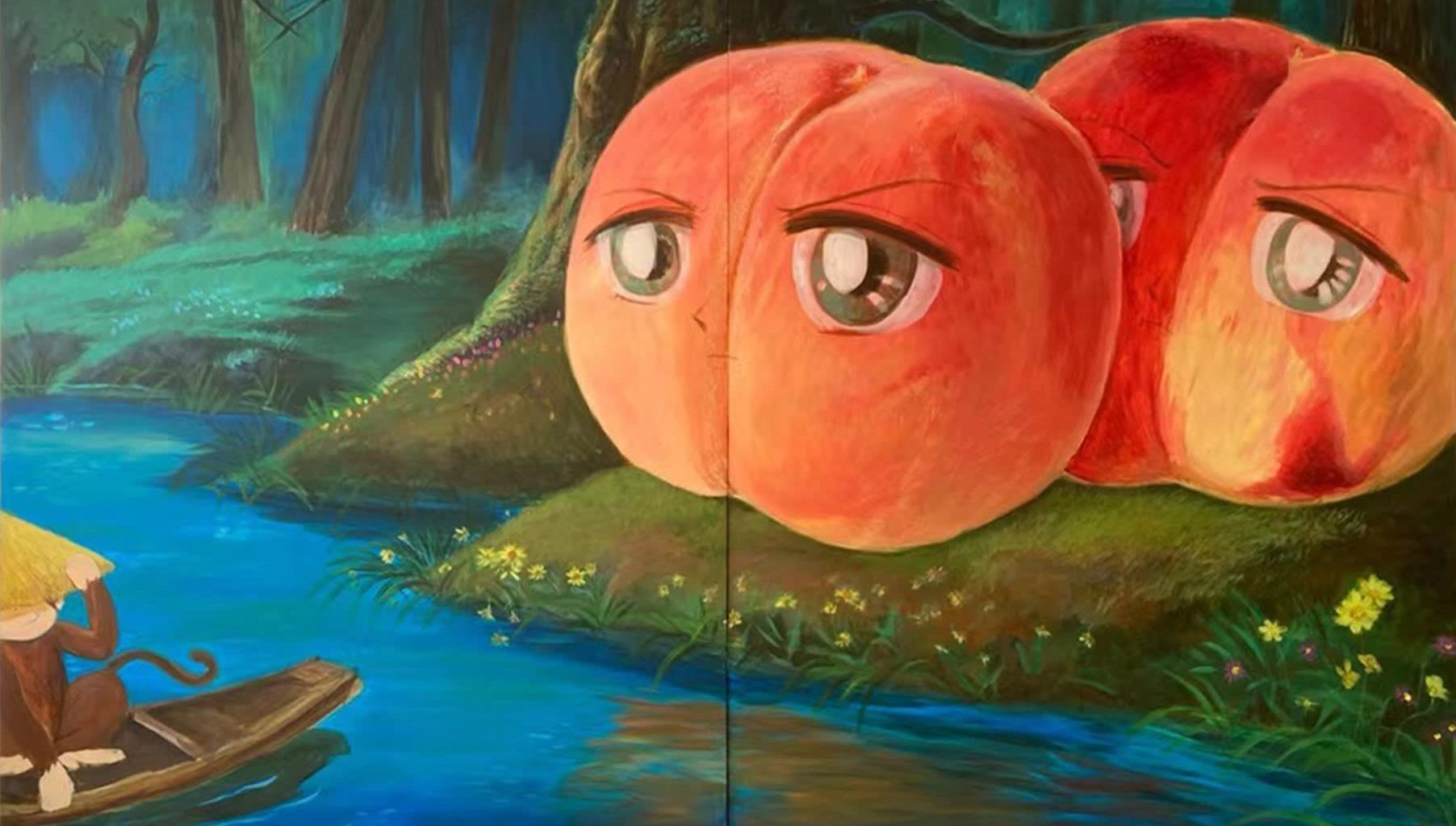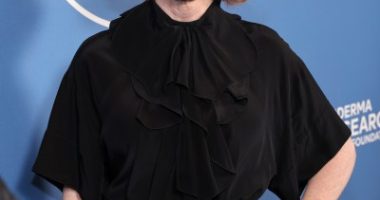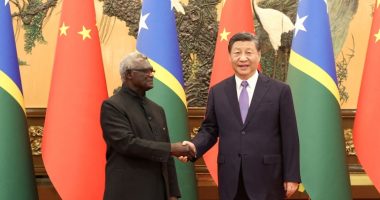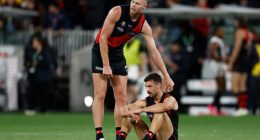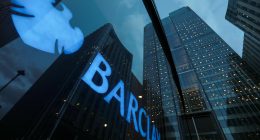Art Basel Hong Kong opens with as much good news as bad. Last year’s release from all Covid restrictions has given the event a reboot and resulted in 242 exhibitors, 93 more than in 2023. Of these, 23 are new to the fair while 69 return after what for some was a four-year break, signalling renewed faith in Hong Kong’s position as Asia’s art-market centre.
On the other hand, China’s economy is facing a protracted slowdown, as its property sector, hit by developers’ defaults, continues to suffer. The systemic risk has notably impacted the mood around luxury goods spend, according to results from the likes of LVMH and Kering for the second half of 2023. The art market has not been immune, with disappointing auction sales including works consigned by Long Museum founders Liu Yiqian and Wang Wei, though last year’s evening auctions in Hong Kong proved more resilient than those in New York and London, according to ArtTactic.
Dealers coming back to the Hong Kong fair see much opportunity. “We last did the fair in 2019 and are back because it’s still the best way to keep strong ties with Asia,” says José Kuri, co-founder of Mexico City and New York gallery Kurimanzutto, which fields a solo booth of Colombian artist Oscar Murillo. Kuri and others point to a major difference between Hong Kong in 2019 and 2024: the 2021 opening of its vast M+ Museum in the ambitious West Kowloon Cultural District, a game-changer for the city’s Modern and contemporary art credentials and the momentum in its market.

Lorraine Kiang, co-founder of Hong Kong’s expanded Kiang Malingue gallery, senses the renewed support of their city. “Galleries that took a break and tried out other cities in Asia have realised how hard [Hong Kong] is to replace,” she says. Of the cooler climes in the market, she says: “The economy isn’t booming like it was a few years ago, but there is also something more substantial. There’s perhaps less impulse-buying, and collectors are more sophisticated.” Her gallery brings a mixed booth of its artists to the fair, including work by Chou Yu-Cheng and Liu Yin.
Ed Tang, who co-runs the advisory business Art-Bureau out of Hong Kong, New York and London, is of a similar mind. “People [in Hong Kong] don’t see buying art as a speed sport now, they know it takes time,” he says. He launched his business during the pandemic so all is relative, but he is in hiring mode, recently bringing in auction data expert Edouard Benveniste as a partner, with appointments in Hong Kong on the horizon.
The revival of Hong Kong’s art market goes beyond Art Basel, notes its director Angelle Siyang-Le. Auction houses, whose executives know where the biggest business happens, are piling in with new, starchitect-designed buildings. Last year Phillips opened a swanky space designed by Herzog & de Meuron and LAAB Architects, opposite M+; Sotheby’s has commissioned the Rotterdam architects MVRDV to design its new “Maison” to open in the Landmark Chater luxury retail building in July; Christie’s is due to become the anchor tenant in the nearby Henderson skyscraper, designed by Zaha Hadid Architects, later this year.

Meanwhile, talk of the town is Hauser & Wirth’s new 10,000 sq ft, street-level and first-floor gallery in Central, which opens its second show (new work by Glenn Ligon) during the fair. This year too, the African art fair 1-54 is taking a punt on Hong Kong, launching its first taster showing in town at Christie’s (March 26-30).
Politically, things are still uncomfortable. Concerns about China’s legal oversight of Hong Kong — which faced intense pro-democracy protests in 2019 — have been stirred up again following this month’s fast-tracked and expanded security bill, which imposes new penalties for treason and insurrection and came into effect on March 23.
Uncertainty is hardly new to Hongkongers, said Siyang-Le before the latest legislation. She grew up between mainland China and the UK then moved to Hong Kong in 2012. She notes the prevailing view that Hong Kong, a British colony for more than 150 years, occupied by Japan during the second world war, handed back to China in 1997 and with a large expat community, “has always gone through identity crises”.

Political tensions can prompt some great art. Among Siyang-Le’s highlights in this year’s fair is Ming Wong’s “Friendship first, Competition second” (2024), a giant ping-pong ball split into two halves. Through archival videos, the work charts the so-called “Ping-pong diplomacy” between China and the US, prompted by the 1971 World Table Tennis Championships (Ota Fine Arts, Singapore). Another work, by Haegue Yang, spins today’s divergent times into huge hybrid forms of bright woven rattan with performative handles and mysterious protrusions (Kukje Gallery and Kurimanzutto).
Compounding issues is the wider economic and sociopolitical environment, in which galleries around the world are struggling to thrive. Goodman Gallery owner Liza Essers is among a handful not returning to the Hong Kong fair this year. She is, she says, taking a general pause on the art market’s financially and physically punishing schedule to focus on running her business. “It’s been a tough time for galleries and I haven’t had a chance to go back to Asia post-Covid. It’s an important place for us, we just need to regroup while working out our best strategy there,” Essers says.
Even the luxury industry is not helping the bearish mood — last month, Christian Dior Homme abruptly postponed a highly anticipated catwalk show, due to take place just before the Art Basel fair in Hong Kong, giving no official reason.

For the seasoned Hong Kong gallerist Pearl Lam, who brings a mixed booth to the fair, the past few years have proved “a wake-up call”. In the aftermath of the lockdowns, “the Hong Kong government is working harder to build the city back as an international centre, with family office conferences and so on,” she says. Beyond the city, talk now is of the “Greater Bay Area”, which takes in Hong Kong, Macau and nine municipalities on the mainland; this year, Art Basel took its talks programme to Guangzhou. “There are clearly some real concerns in terms of the economy,” says Art Basel chief executive Noah Horowitz, “but let’s not get ahead of ourselves in terms of China.”
Art Basel Hong Kong runs March 28-30, artbasel.com
Read More: World News | Entertainment News | Celeb News
FT

